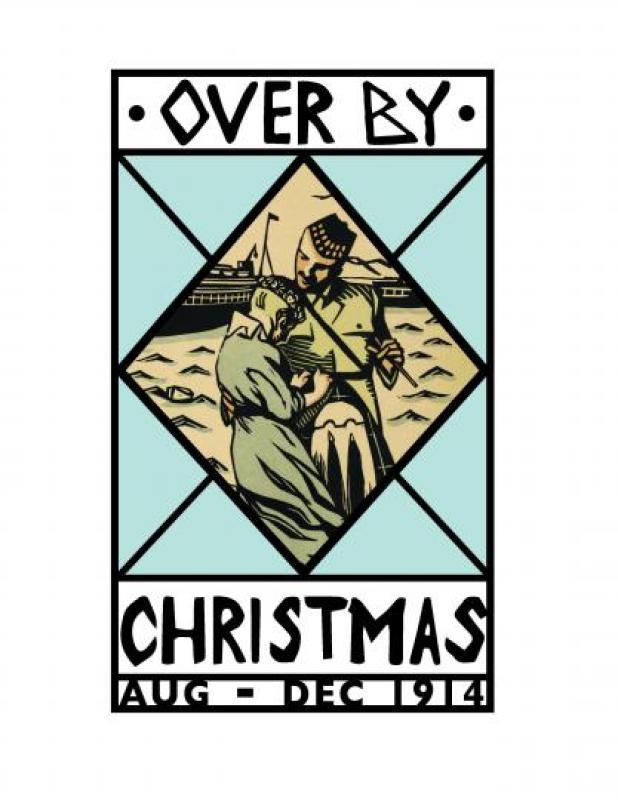“We have no idea what war will be like. There are flags on all the houses in town, just as if we were having a festival.”
— Excerpt from the diary of Piete Kuhr, a 12-year old girl from East Prussian Province of Posen
Many thought World War I would be over in days, surely by Christmas. To many, Christmas was a time of peace and goodwill towards others, the celebration of the Prince of Peace. Each cause was just. God was on their side, but the war was not over by Christmas.
Pistol shots of an assassination on a Sarajevo street on June 28, 1914 ignited the match of war. Quickly, the growing flames led to threats, armies mobilizing, war being declared, and dreadnoughts steaming to sea.
War was romantic. War was colorful flags, spiked helmets and flashing sabers. War was an adventure. Those called to arms would be heroes, defending their homelands and way of life. Over By Christmas: August-December 1914 examines these romantic notions colliding with the harsh realities of war. The exhibit highlights the first five months of the war through specific topics or case studies including: Germany Mobilizes and Germany’s Rush to War, Invasion: Belgium and France and War in the East.
Objects and documents featured in Over by Christmas are from the extensive and diverse collection of the National WWI Museum. Most items have not been exhibited before with several recently acquired just for this special exhibition, giving new and repeat visitors a fresh viewpoint on the critical first months of the war.
One prominent case study featured in the exhibition stems from the early war in the Pacific with the S.M.S. Cormoran. Waves crashed against the hull of the Russian mail steamer, the S.S. Rjasan in the Straits of Tsushima north of Japan in a rough sea on Aug. 4, 1914. A lurking German raider, the S.M.S. Emden, spotted her as quarry. The Rjasan (originally built in Germany) was captured and soon brought to the German-controlled port of Tsingtao, China and renamed the S.M.S Cormoran. A brass and glass porthole, the lower end of a copper voice tube used to communicate between decks and an engine room steam gauge made by Schaffer & Budenberg in Magdeburg, Germany are among the exhibited items.
The exhibition showcases objects that represent different aspects of the war, including:
- 1914 Prussian flag
- Bronze medallions honoring events or individuals from the war
- Lithograph print by French artist George Scott
- French colonial zouave infantry uniform
- The Silver Bullet or the Road to Berlin game
- Brass and glass porthole from the S.M.S. Cormoran
- German cigar box for Christmas 1914 with portraits of Kaiser Wilhelm II and Emperor Franz Joseph
- Belgian grenadier’s dark blue wool coat
Open from May 3 through April 12, 2015 in Exhibit Hall, Over by Christmas is the second of the Museum and Memorial's exhibitions in observance of the World War I Centennial and in conjunction with On the Brink: A Month That Changed the World. Exhibits are included with Museum and Memorial admission and free for members.
“One of the most beautiful memories the war has given me was the sight of Paris during the first days of mobilization. The city was quiet and somewhat solemn. The drop in traffic, the absence of buses, and shortage of taxis made the streets almost silent. The sadness that was buried in our hearts showed only the red and swollen eyes of many women.”
— Sergeant March Bloch, 272nd Regiment of Infantry, French Army
